 Hydraulics and Environment Department
Hydraulics and Environment Department
Projects - M&M-SHIPS - Manoeuvering & Moored Ships in Ports. Physical and Numerical Modelling
This project proposes the creation of an integrated tool made of several numerical models able to characterize the wave climate and its effects in ports, particularly in terms of movements of manoeuvring ships and when moored to a pier. The validation of this tool will be accomplished by using physical model tests, to be carried out under the scope of the project, and in situ measurements made in a Portuguese port. The information obtained from this tool will help the management of port operations and therefore will increase the competitiveness of ports.
FRAMEWORK
Container ship traffic has increased significantly in recent years as well as ship dimensions, and therefore a need for port expansion and construction of new ports is apparent nowadays. Portugal is no exception to this global phenomenon and thus there are plans to expand some of the major national ports (e.g., Sines and Leixões), thus allowing larger ships to access those ports.
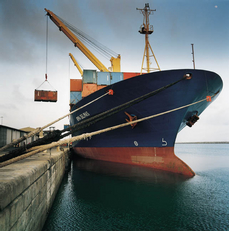
FRAMEWORK
Container ship traffic has increased significantly in recent years as well as ship dimensions, and therefore a need for port expansion and construction of new ports is apparent nowadays. Portugal is no exception to this global phenomenon and thus there are plans to expand some of the major national ports (e.g., Sines and Leixões), thus allowing larger ships to access those ports.

Such large ships require depths and widths of the entrance channels relatively large and, under those conditions, it’s inevitable that waves will more likely enter the ports. Those waves, if excessive, can cause serious problems in port operation as a result of also excessive movement of the ships. The costs associated with ship’s downtimes are enormous. In the case of container ships, horizontal movements must also be very small due to crane operation restrictions.
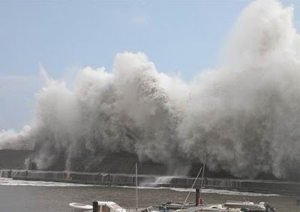 | 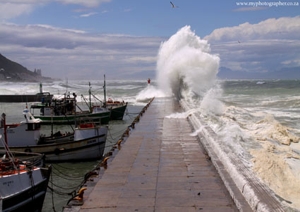 |
Excessive ship movements can also cause the ships to collide with the berth or cables to break, with subsequent serious economic losses.
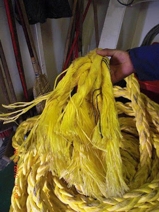 | 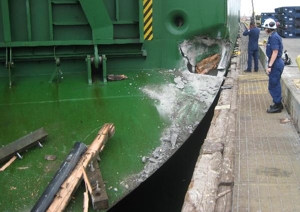 |
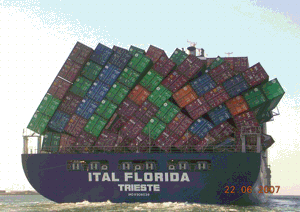 | 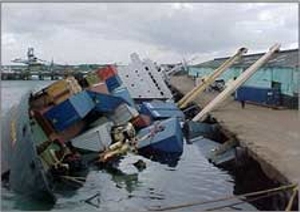 |
From the above it becomes clear how important is the ability to know in advance the sea conditions that lead to excessive movement of ships. This knowledge would bring a huge asset to the operational management of the port and it could point out ways of mitigating the referred to problems.
Metodologia
A coupling of numerical models, for generation, propagation and deformation of sea waves, and also for the movements of the ships will be used in order to study of the behaviour of ships in manoeuvring and also when moored to a pier.
SWAMS (Simulation of Wave Action on Moored Ships), that includes two modules, WAVE PROP and MOORNAV, will be used to study the behaviour of ships when moored to the pier. Validation of this model package will follow by using physical modelling and in-situ measurements. Tests will be carried out in a physical model at LNEC, for a number of wave and mooring ship conditions. Measurements will be carried out on a container ship that is moored at one of the docking stations of the XXI Terminal of the port of Sines. SWAMS numerical results will be then compared with measurements obtained both from physical modelling and from in situ measurements.
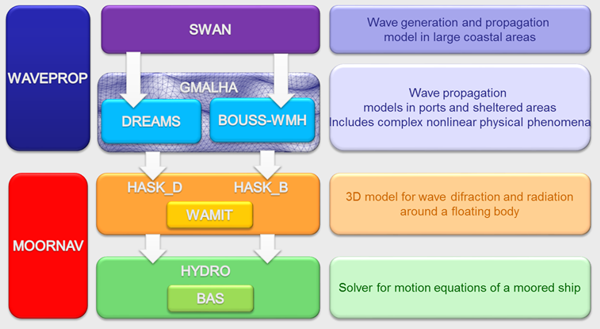
Figure 1 – SWAMS integrated model package.
Figure 2 – Results of the SWANS package. Propagation of sea waves. Movement of the center of gravity of the ship.
Figure 3 – Physical modelling of the movements of a ship under waves action.
Figure 4 – Port of Sines’ Terminal XXI. Numerical simulation of wave propagation into the port.
Metodologia
A coupling of numerical models, for generation, propagation and deformation of sea waves, and also for the movements of the ships will be used in order to study of the behaviour of ships in manoeuvring and also when moored to a pier.
SWAMS (Simulation of Wave Action on Moored Ships), that includes two modules, WAVE PROP and MOORNAV, will be used to study the behaviour of ships when moored to the pier. Validation of this model package will follow by using physical modelling and in-situ measurements. Tests will be carried out in a physical model at LNEC, for a number of wave and mooring ship conditions. Measurements will be carried out on a container ship that is moored at one of the docking stations of the XXI Terminal of the port of Sines. SWAMS numerical results will be then compared with measurements obtained both from physical modelling and from in situ measurements.

Figure 1 – SWAMS integrated model package.
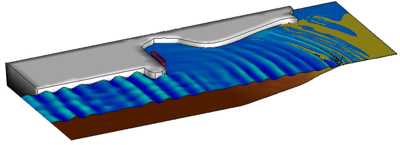 | 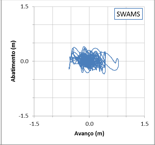 |
Figure 2 – Results of the SWANS package. Propagation of sea waves. Movement of the center of gravity of the ship.
 |
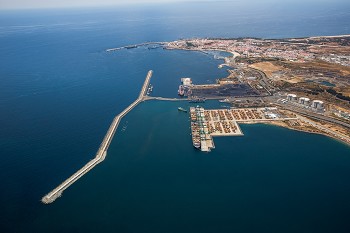 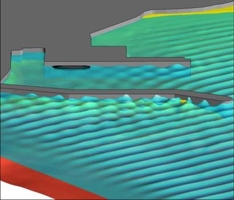 |
In the study of the ship behaviour when manoeuvring, a model based on the potential wave theory will be used, which will be expanded to take into account the effect of the bathymetry. The code that allows one to obtain the interaction forces between manoeuvring ships and moored ships, which was initiated in the EU EFFORTS project, will be used to predict the forces on the moored ships induced by the passage of nearby ships. The results of these calculations will make it possible to establish safety limits for the lateral distance between the moored ship and the passing ships. The results of this numerical model will be compared with the results of the physical model.
This work is a follow-up from previous research projects such as MOIA and HIDRALERTA, which were both focused on the development of a forecasting system of the sea waves and overtopping, respectively, and both of them were applied to the port of Praia da Vitória, Azores. We are willing now to extend these systems to take into account the effects of wave action on the ships and to predict the movements of the moored ships.
Project components:
This work is a follow-up from previous research projects such as MOIA and HIDRALERTA, which were both focused on the development of a forecasting system of the sea waves and overtopping, respectively, and both of them were applied to the port of Praia da Vitória, Azores. We are willing now to extend these systems to take into account the effects of wave action on the ships and to predict the movements of the moored ships.
Project components:
- Modelling sea waves – Generation and propagation of waves from offshore to where the ship is moored.
- Modelling the behaviour of manoeuvring ships in port approaches, moored ships movements and development of a mathematical model for the interaction of moored ships with passing by vessels.
- Physical modelling Scale model tests to measure free surface elevations, ship motions and tensions in the mooring system.
- In situ measurements of atmospheric and wave conditions as well as moored ship motions and mooring forces.
- Validation of the tool with the results obtained in the physical model and in situ measurements.
- Application to a real case.
Expected results:
- An integrated tool with coupled numerical models;
- The development of numerical models with application to generalized ports;
- Data sets from physical tests for validation of numerical models;
- Advanced training of young researchers;
- Collaboration between research institutions, port authorities and companies.
Team
- João Alfredo Santos, Head Researcher, CENTEC/ISEL
- Conceição Juana Fortes, Researcher, LNEC
- Rui Capitão, Researcher, LNEC
- Liliana Pinheiro, Researcher, LNEC
- Francisco Pedro, Researcher, LNEC
- Serge Sutulo, Researcher, CENTEC
- J.M. Varela, Researcher, CENTEC
- Liliana Rusu, Researcher, CENTEC
Year: 2015
Coordinator(s):
LNEC - Laboratório Nacional de Engenharia Civil (National Laboratory for Civil Engineering), Centro de Engenharia e Tecnologia Naval e Oceânica
Funding:
Fundação para a Ciência e a Tecnologia (FCT), LNEC - Laboratório Nacional de Engenharia Civil (National Laboratory for Civil Engineering),
« return




